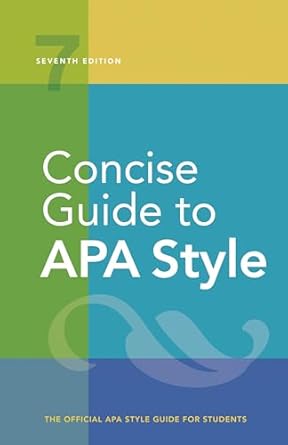[toc]
referencing audiovisual works a comprehensive guide
Concise Guide to APA Style: 7th Edition (OFFICIAL)
Page 300 Review
Analyzing Audiovisual Work References: A Comprehensive Guide
This ebook excerpt delves into the intricate world of referencing audiovisual works, providing a structured approach for various media types.
Let’s dissect the key elements and guidelines presented.
Defining Authorship and Descriptions
The excerpt emphasizes that the author of an audiovisual work is determined by its media type.
It instructs us to:
“Describe the audiovisual work in square brackets—for example, ‘[Film],’ ‘[TV series],’ ‘[Audio podcast episode],’ ‘[Song],’ ‘[Painting],’ and so forth—in the title element of the reference.”
This is crucial for clear identification and categorization.
The examples provided are diverse, covering films, TV series, podcasts, songs, and even paintings.
This broad scope indicates the comprehensive nature of the referencing guide.
The Source Element: Production Companies, Labels, and More
Moving beyond the title, the excerpt details the importance of the source element:
“In the source element of the reference, provide the name of the production company for films, TV series, or podcasts; the label for music albums; the museum name and location for artwork; or the name of the streaming video site that hosts a streaming video.”
This breakdown demonstrates how the source varies depending on the medium.
For visual media like films and TV series, the production company is paramount.
For audio recordings, the record label takes precedence.
And for artwork, the museum holding the piece and its location are essential for proper attribution.
Citing Direct Quotations and Seeking Permissions
The excerpt also touches upon nuanced aspects of referencing, such as citing direct quotations:
“To cite a direct quotation from an audiovisual work (e.g., from a film), see Section 8.28; for interviews, see Section 8.7.”
This directs readers to specific sections for detailed guidance on handling quotations and interviews related to audiovisual works.
Furthermore, it addresses the crucial matter of copyright:
“If you want to reproduce an audiovisual work (e.g., a photograph or clip art) rather than just cite it, you may need to seek permission from the copyright owner and/or provide a copyright attribution per the terms of the image license (see Section 8.36 for more).”
This is a vital reminder about respecting intellectual property and adhering to copyright regulations when using audiovisual content.
Templates for Standalone Audiovisual Media
The excerpt introduces templates for constructing references.
The first template is for standalone audiovisual media:
“Director, D.
D. (2020). [Description].
Company. https://…
(Director). (1989-present). [Description].
Company.
XXXXXX
Producer, P.
P. (2013-2019). [Description].
Label.
(Executive Producer). (2019, July 21). [Description].
Museum Name; Museum Location.
Host, H.
H. (Host). [Description].
Department Name, University Name.
Artist, A.
A. [Description].
Uploader, U.
U.”
This template offers a clear structure, encompassing various roles like director, producer, host, and artist.
The inclusion of dates and URLs is crucial for traceability and verification.
Templates for Audiovisual Media as Part of a Greater Whole
The second template caters to audiovisual media that are part of a larger work:
“Writer, W.
W. (2020).
Title of episode In P.
P. (Executive Producer), & D.
D. (Director). (Season No., Episode No.) TV series.
Production Company. https://…
(Writer), (2020).
Title of song In Title of podcast. [Description].
Production Company.
Director, D.
D. (Director).
On Title of album.
Label.
Host, H.
H. (Host). [Description].
Producer, P.
P. (Producer). [Description].
Composer, C.
C. [Description].
Artist, A.
A.”
This template is more complex, acknowledging the hierarchical structure of many audiovisual projects.
It accounts for writers, directors, producers, and composers, providing a framework for referencing specific episodes within a TV series or songs within a podcast.
Conclusion
In conclusion, this excerpt provides a concise yet comprehensive guide to referencing audiovisual works.
By offering clear definitions, diverse examples, and structured templates, it empowers researchers and content creators to accurately and ethically cite audiovisual materials in their work.
The emphasis on copyright and permissions further underscores the importance of responsible content usage.
Buy full ebook for only $18: https://www.lulu.com/shop/american-psychological-association/concise-guide-to-apa-style-7th-edition-official/ebook/product-rmzpq54.html?page=1&pageSize=4
Referencing Audiovisual Works A Comprehensive Guide
Read more: Hyphenation Rules: A Guide to Clear Writing


Leave a Reply